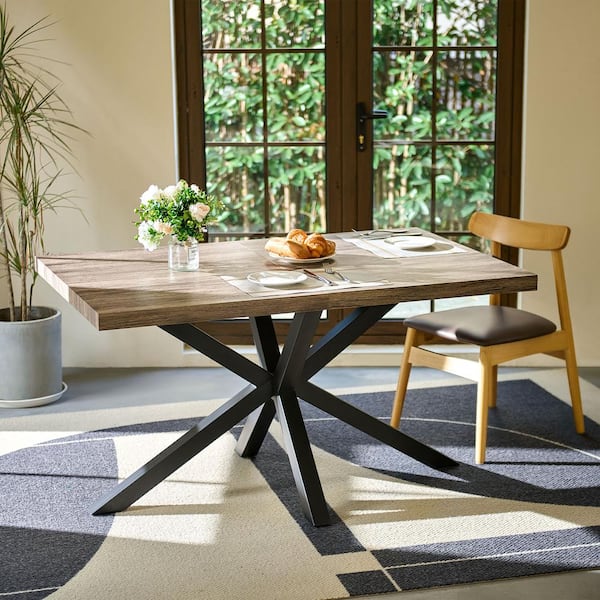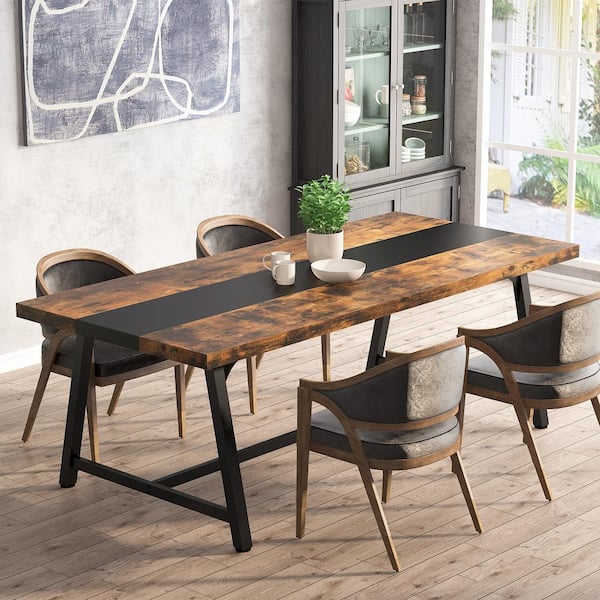Attain an Innovative Look with Premium Dining Table Legs Wood Options
Exploring the Various Sorts Of Dining Table Legs Timber for Your Dining Space
The option of eating table legs timber can exceptionally influence both the aesthetic and practical top qualities of your eating space. Solid timber options, such as oak and walnut, supply a traditional appearance with unequaled durability, while engineered wood choices use cutting-edge styles that simulate the richness of natural grains.
Solid Wood Options

In addition, strong timber is renowned for its strength and durability. Unlike crafted products, solid wood is much less vulnerable to warping and damages over time when properly preserved. This makes it an excellent choice for family members or those that regularly hold events. Each item of solid timber is one-of-a-kind, showcasing private qualities that include in the charm and character of the table.
Additionally, solid wood can be finished in various ways, varying from all-natural oils to tarnished coatings, permitting house owners to personalize their furniture to match their decoration. In recap, selecting solid timber for dining table legs not just makes sure structural stability but additionally enhances the aesthetic charm of the eating area, making it a beneficial financial investment for any home.
Engineered Wood Alternatives

Plywood, built from several layers of wood veneer, is particularly strong and stable, making it a superb choice for dining table legs. Its split make-up enables it to stand up to changes in moisture and temperature much better than standard solid timber. MDF, on the various other hand, offers a smooth surface area for painting or veneering, enabling developers to accomplish a sleek appearance while preserving architectural integrity.
When choosing engineered wood options, it is crucial to think about the intended use and wanted visual. These products not just enhance the capability of dining areas but additionally permit for greater layout flexibility, ensuring that standard and contemporary designs can coexist harmoniously.
Reclaimed Wood Includes
Redeemed timber provides a special mix of sustainability and character, making it an increasingly popular choice for dining table legs. Sourced from old barns, factories, and various other structures, redeemed wood embodies a history that new products just can not reproduce. Each item brings its very own tale, marked by distinct imperfections, knots, and varying grain linked here patterns, which add to a table's one-of-a-kind visual appeal.
Along with its aesthetic appeal, reclaimed wood is an eco-friendly alternative. By repurposing previously made use of products, it decreases the need for new lumber, therefore helping to conserve woodlands and decrease waste. This lines up with an expanding customer choice for sustainable methods in home furnishings.
In addition, recovered timber is commonly extra resilient than recently collected timber as a result of its age. The all-natural drying out process that reclaimed timber goes through lead to a denser and more powerful product, making it less prone to bending and splitting. This enhances the durability of dining tables, allowing them to stand up to the roughness of day-to-day use.
Softwood vs. Hardwood
When choosing dining table legs, recognizing the distinctions between softwood and hardwood is important for accomplishing both visual and useful goals. They commonly show an even more rustic appearance, making them appropriate for country-style or informal dining rooms.
On the various other hand, hardwoods, sourced from deciduous trees like oak, maple, and cherry, are renowned for their density, strength, and sturdiness. The complex grain patterns and abundant tones of hardwoods offer a advanced and ageless charm, making them optimal for formal dining setups. While woods have a tendency to be more expensive and much heavier, their resilience against wear and tear often justifies the investment.
Eventually, the selection in between softwood and wood for dining table legs must line up with your design vision, use requirements, and budget plan, guaranteeing that your dining space shows your personal design while staying useful with time.

Therapies and surfaces
The aesthetic appeal and long life of table legs can be substantially improved with various coatings and treatments. These procedures not read this just safeguard the timber from damages but also raise its appearance, enabling it to enhance diverse interior styles.
One usual therapy is staining, which passes through the wood and enhances its all-natural grain while including shade. Discolorations give an abundant, elegant appearance, enabling home owners to match their furnishings with existing style. On the other hand, clear surfaces such as polyurethane or varnish produce a protective layer without modifying the timber's initial shade, guaranteeing toughness versus deterioration.
Furthermore, all-natural oils, like tung or linseed oil, nurture the timber and supply a subtle shine, all while being green. These oils enable the surface to take a breath, protecting against wetness buildup and possible bending.
For those looking for a rustic appeal, weathered or troubled surfaces can be put on produce an aged appearance, including personality to the piece. Eventually, the selection of treatments and coatings relies on individual choice, preferred looks, and the specific timber kind, making it necessary to consider these factors when picking dining table legs for your room.
Conclusion
Solid timbers, engineered options, and recovered options each offer distinctive advantages, catering to different preferences and demands. Inevitably, the option of wood kind need to align with preferred design, longevity, and ecological factors to consider, enhancing the general eating experience.
The choice of dining table legs timber can exceptionally affect both the functional and aesthetic top qualities of your dining room - Dining Table Legs Wood. Strong wood alternatives, such as oak and walnut, offer a traditional appearance with unmatched longevity, while crafted timber choices supply ingenious styles that mimic the splendor of all-natural grains. Strong wood uses a classic top quality that can boost the total style of look at this now an eating area. Each piece of solid wood is unique, showcasing individual features that include to the appeal and personality of the dining table
In addition, reclaimed wood is frequently a lot more sturdy than freshly collected wood due to its age.